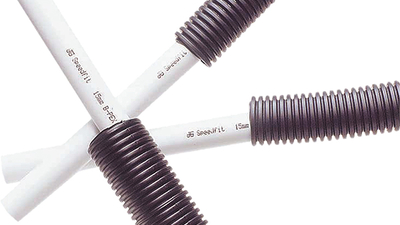Water regulations schedule 2.7: What you need to know

Stop the press! Did you know that breaching WaterSafe regulations is a criminal offence? Offenders may face prosecution and can land them with a criminal record, be fined and may have to pay costs.
One such regulation is Water Regulations Schedule (WRS) 2.7, and here’s what you need to know to have yourself covered.
WRS 2.7 provides safety to every homeowner
Putting it simply, WRS 2.7 regulation covers where and how you should run pipes in a building with a mains water supply – but not UFH or manifold systems for radiators. It was created to aid installers and protect homeowners from substandard installation methods.
At some point in your life, whether you’re an installer or homeowner, you might face a pipe leaking within a floor. What WRS 2.7 does is, it ensures that there are no inaccessible fittings within the concealed floor, as the regulation doesn’t allow for it.
Secondly, the entire length of a pipe has to be covered within a conduit (a protective sleeve for the pipe) and therefore easily removable. This means that digging up the floor is thing of the past and protects homeowners from costly investigation work.

What pipe solutions work best for WRS 2.7?
It’s important to know that these regulations mean that pipes and conduits are of a much higher importance than ever before. It’s not just about laying the pipe in the pipe sleeve; you must now consider the length of the pipe you’ll need to use, where it needs to extend to, how easy it is to remove from the conduit, and whether joints, if any, need to be made.
Without a doubt, the best practice is to use flexible pipe solutions made from PEX or polybutylene, such as the JG Speedfit Layflat® range of pipes and conduits. These pipes give installers enough flexibility to easily pull and push through conduits, even if they bend round corners. Available in coil lengths of up to 50m in the two commonly used pipe sizes, 15mm and 22mm, conduit pipes allow users to rigidly stick to the WRS 2.7 regulations.
Installers may also wish to consider the ‘Pipe in Pipe’ solutions. The concept is simple – pre-sleeved pipes, ready to lay within concrete or masonry. With the pipe already pre-laid in the conduit, installers can save time by not having to push the pipe through the conduit during installation, which can creep up if you’re working on first-fix housing estates.

What else do you need to know?
Another requirement of WRS 2.7 is that all fittings laid in the floor must be easily accessible. If it’s possible to avoid using a fitting in any instance, that would be the best way forward because any joint represents a potential point where a leak could occur. Again, flexible plastic pipes available in long lengths are the best way to combat this.
If a fitting does have to be used, it should avoid coming into direct contact with the screed, as this can cause unwanted problems due to its chemical make-up. Copper soldered joints and pipes are the most susceptible to this type of problem, and ‘pin-holing’, small holes developed by corrosion, is a common problem. To protect the fittings in screed, they should be contained in boxing units. If the fitting needs to be serviced later, a removable lid is used to access it thereafter.
Water Regulations Schedule 2.7 is a lot more important than most people think, if you have any questions then let us know by contacting us here.
Water Regs UK
Water Regs UK reports that a number of testers who have been trained in the new Approved Installation Method have not registered with an approved scheme.
